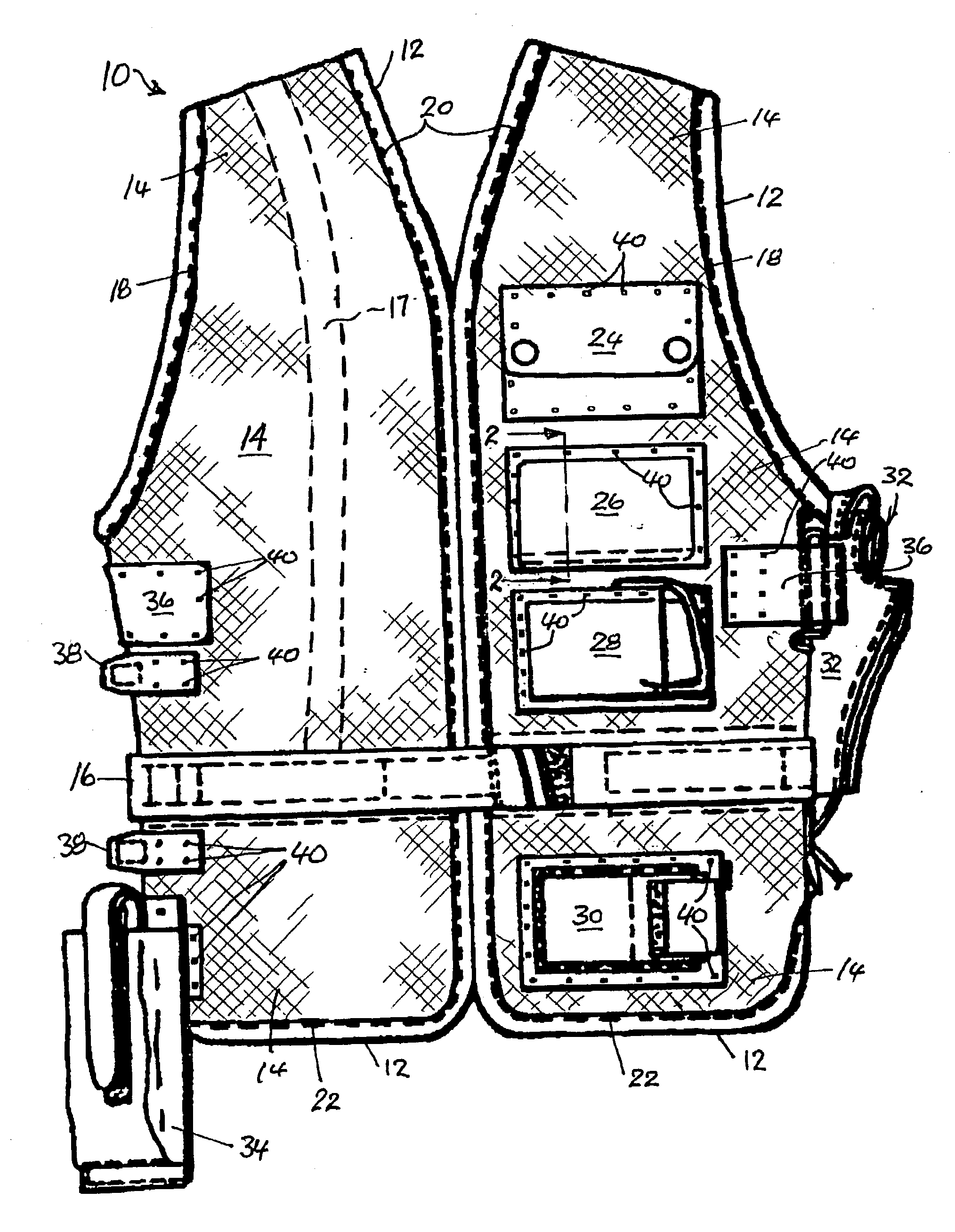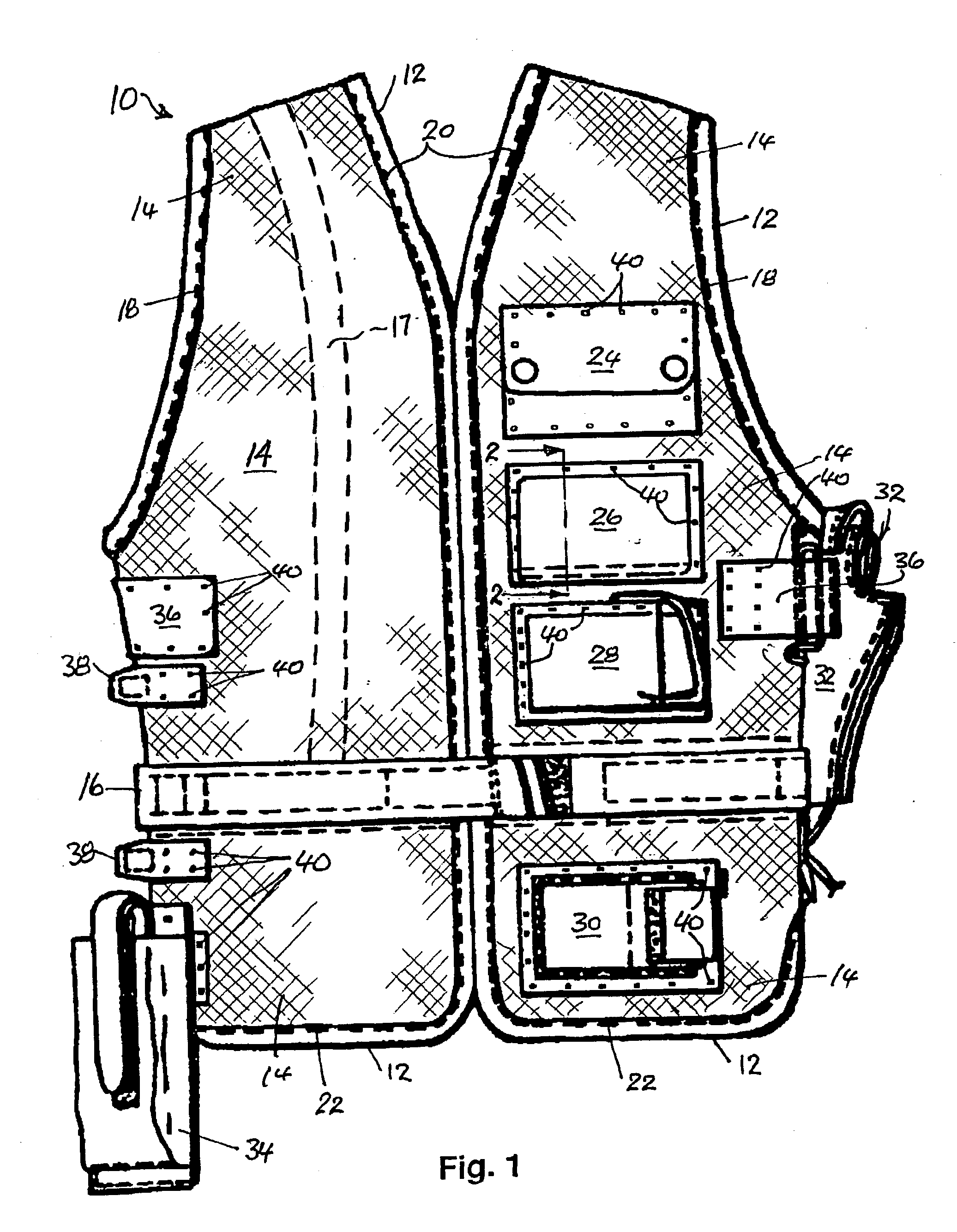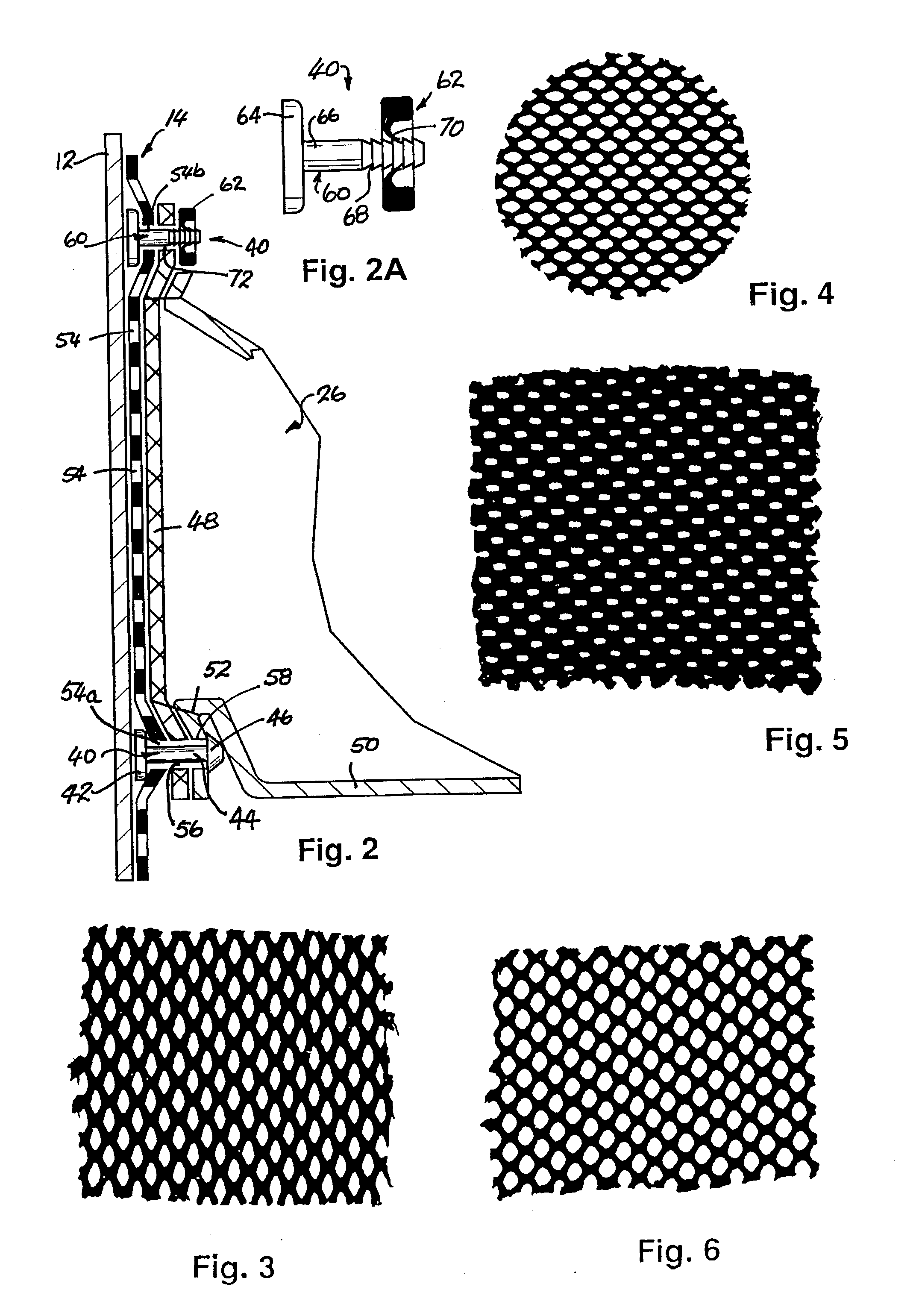Load carrying assembly
a technology for carrying parts and parts, applied in the field of load carrying parts, can solve the problems of prone to tearing or fraying, less comfortable wearing, and high cost, and achieve the effects of convenient formation, convenient cutting, and no corrosion
- Summary
- Abstract
- Description
- Claims
- Application Information
AI Technical Summary
Benefits of technology
Problems solved by technology
Method used
Image
Examples
Embodiment Construction
[0017] Having portrayed the nature of the present invention, a particular example will now be described with reference to the accompanying drawings. However, those skilled in the art will appreciate that many variations and modifications can be made to the example without departing from the scope of the invention as outlined above. In the accompanying drawings:
[0018] FIG. 1 is a front elevation of a vest-like garment having load-carrying pouches attached thereto.
[0019] FIG. 2 is a sectional end elevation of the vest and portion of a pouch taken on section line 2-2 of FIG. 1, FIG. 2A being an enlarged view of a stud fastener.
[0020] FIGS. 3 to 6 are representations of various forms of woven mesh suitable for use with the panels and pouches of the vest of FIG. 1.
[0021] With reference to FIGS. 1 and 2, the chosen example of the application of the principles of the present invention is a vest 10 suitable for use by military or paramilitary personnel, or by hunters and fishermen, or by tr...
PUM
 Login to View More
Login to View More Abstract
Description
Claims
Application Information
 Login to View More
Login to View More - R&D
- Intellectual Property
- Life Sciences
- Materials
- Tech Scout
- Unparalleled Data Quality
- Higher Quality Content
- 60% Fewer Hallucinations
Browse by: Latest US Patents, China's latest patents, Technical Efficacy Thesaurus, Application Domain, Technology Topic, Popular Technical Reports.
© 2025 PatSnap. All rights reserved.Legal|Privacy policy|Modern Slavery Act Transparency Statement|Sitemap|About US| Contact US: help@patsnap.com



